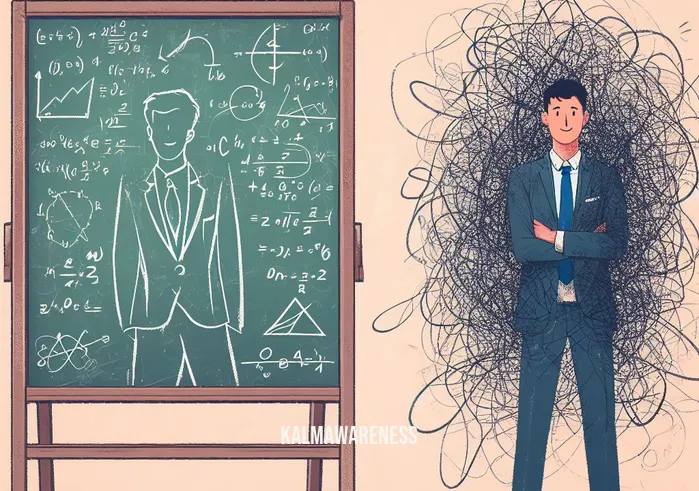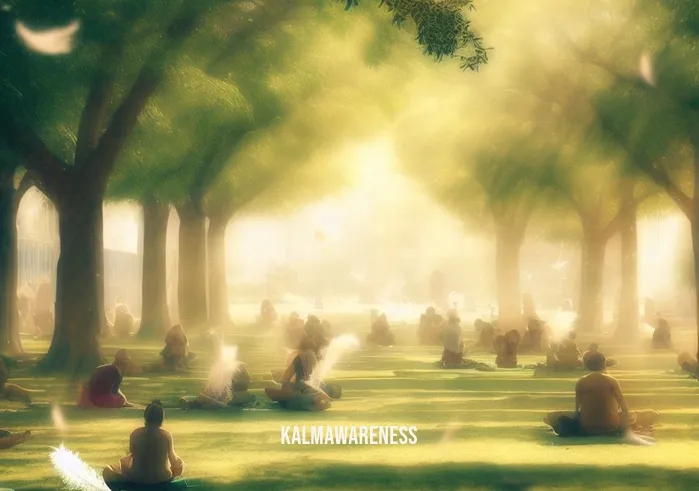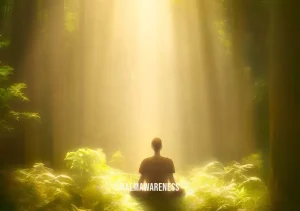Meditation on Water: Unraveling the Fluid Essence of Tranquility
Discover the Euphoria of Meditative Stillness
The element of water, with its flowing nature and gentle ripples, has long been a subject of fascination. Its calm demeanor, the way it reflects light, and the soothing sounds it produces have been a source of relaxation for many. Harnessing the power of this element for meditation can lead to profound revelations and a deeper connection to nature. In this article, we dive deep into the concept of meditation on water and explore how it intertwines with various mindfulness practices.
H2: The Flowing Essence of Water Meditation
Water is ever-evolving, constantly moving, and yet it finds its calm in still ponds and serene lakes. Similarly, our minds are often turbulent with thoughts, but through practices like mindful movement sleep, we learn to find our inner stillness. Meditation on water teaches us to emulate this fluidity in our thoughts, allowing them to flow without resistance.
Embrace the Movement: Like water, our thoughts are ever-changing. Techniques from EMDR meditation teach us to be flexible and adapt to situations.
Reflect on the Stillness: A still water surface reflects the world clearly. Our minds, when calm, can reflect our true nature. This idea is well-discussed in relax and be aware.
Dive into the Depths: Going deep into our consciousness, like diving into deep waters, can reveal hidden treasures of our psyche. Tools like floating meditation can guide us on this introspective journey.
H3: The Power of Visualization in Water Meditation
Visualizing yourself being surrounded by water or imagining the ebb and flow of waves can enhance the meditation experience. It’s akin to the sensation of floating meditation, where one feels weightless, free, and deeply connected to the universe.
“Water does not resist. Water flows. When you plunge your hand into it, all you feel is a caress.” – Margaret Atwood
Such visualization techniques find parallels in practices like rouse yoga, where movement and imagery come together to form a harmonious meditation experience.
H4: Linking Breath to the Rhythms of Water
Breathing, much like the tides, has its own rhythm. The mind breaths technique emphasizes syncing one’s breathing pattern to the imagery of waves – inhaling as a wave rises and exhaling as it recedes. This practice not only enhances concentration but also helps in achieving a peaceful state of mind.
Elements that Enhance the Experience
Soundscapes: Incorporating sounds of flowing water, gentle waves, or even rain can deepen the meditation experience. It acts as a real-time guide, making the practice more immersive.
Physical Setting: Choosing a spot by a water body, be it a river, lake, or even a small pond, can make a difference. If that’s not feasible, even hand yoga poses with the intention of channeling water energy can be beneficial.
Guided Sessions: For beginners, or even those looking to deepen their practice, turning to resources like inner child healing exercises can provide structured guidance.
In conclusion, meditation on water is more than just a practice; it’s a journey of aligning oneself with nature’s rhythm, understanding the fluidity of our existence, and finding tranquility in the midst of life’s tumult.
Dive deeper into the next part of the article where we’ll delve into the historical significance of water in meditation practices and how various cultures perceive its meditative powers. From ancient rituals to contemporary techniques, water has always been a cornerstone in spiritual journeys. Stay with us as we flow through this enlightening journey.
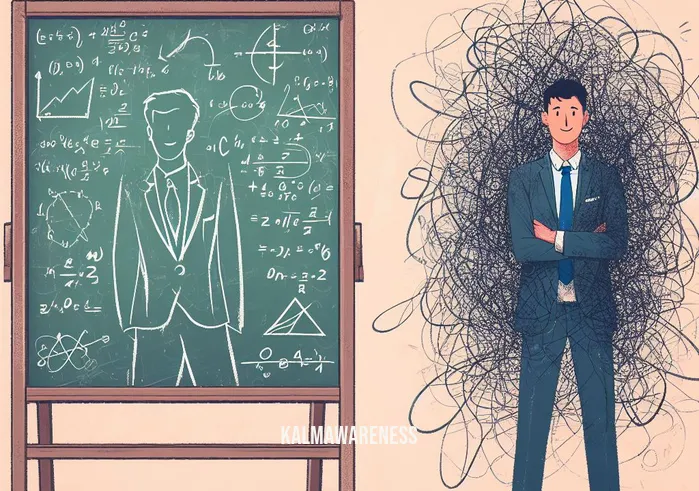
The Historical Significance and Modern Adaptations of Meditation on Water
The intertwining of water with spirituality and meditation has a profound history that spans various cultures and eras. In this chapter, we’ll navigate through the tides of time, understanding the significance of meditation on water in various civilizations and how its contemporary adaptations are impacting our modern lives.
H2: Water Meditation Through the Ages
Ancient Egyptian Practices: The Egyptians, with their advanced understanding of the natural world, often performed rituals on the Nile’s banks. They believed water had purifying powers and could connect the soul to higher realms.
Buddhist Practices: Can you meditate while high on spiritual energy? Buddhists, especially those from the Himalayan regions, often meditate by lakes, believing that water amplifies the positive energies of meditation.
Native American Traditions: For Native Americans, every element of nature was sacred. Lakes and rivers were considered mirrors to the soul. Ceremonies involving water elements were crucial in seeking spiritual guidance.
Hindu Yogic Traditions: Water, or ‘Jal’, is one of the five elements in Hindu philosophy. Rituals like taking a dip in the holy river Ganges were not just physical acts but also forms of meditation, symbolizing the washing away of one’s sins.
H3: Modern-day Interpretations and Adaptations
Water meditation has seamlessly transitioned from ancient practices to finding relevance in our current times. Here are some modern-day interpretations:
Guided Water Meditation: Teenagers walking on the path of mindfulness often find solace in guided meditations that use water sounds or imagery to promote tranquility.
Digital Retreats: With the advent of technology, flight rising meditate sessions, where individuals virtually immerse themselves in serene aquatic settings, are becoming popular.
Therapeutic Practices: Water meditation is also being used therapeutically. For instance, in the HUG method of shifting, individuals are encouraged to visualize water as a medium to channelize their emotions.
H4: The Science Behind Water Meditation
Water’s connection with relaxation isn’t just spiritual; there’s science to it too. The negative ions produced by moving water are believed to increase the production of serotonin in the human brain, leading to feelings of well-being and happiness. Additionally, the sound of water is often categorized as a ‘pink noise’, known for its consistency and ability to enhance relaxation.
H5: Meditation on Water: A Comparative Table
| Aspect | Ancient Practices | Modern Interpretations |
|---|---|---|
| Purpose | Spiritual purification and enlightenment | Relaxation, emotional healing, and mindfulness |
| Locations | Riverbanks, lakes, and sacred water bodies | Digital platforms, therapy rooms, and retreats |
| Techniques | Rituals, chants, and physical immersion | Guided imagery, soundscapes, and virtual reality |
| Associated Tools | Sacred vessels, altars, and natural elements | Digital apps like U Relax Moving, and sensory tools |
| Challenges | Geographical limitations, ritual complexities | Dependency on technology, losing the essence of nature |
In conclusion, while the essence of meditation on water has remained consistent, its practices and interpretations have evolved over time. From being an integral part of religious rituals to being a tool for modern-day relaxation and therapy, water continues to be a medium that connects the human soul to the vastness and mysteries of the universe.
Join us in the next chapter, where we’ll delve into the nuances of combining water meditation with other forms of mindfulness practices. Discover how water, when intertwined with practices like deep breathing or visualization, can amplify the meditative experience manifold. Flow with us as we continue to unravel the depths of this mesmerizing journey.
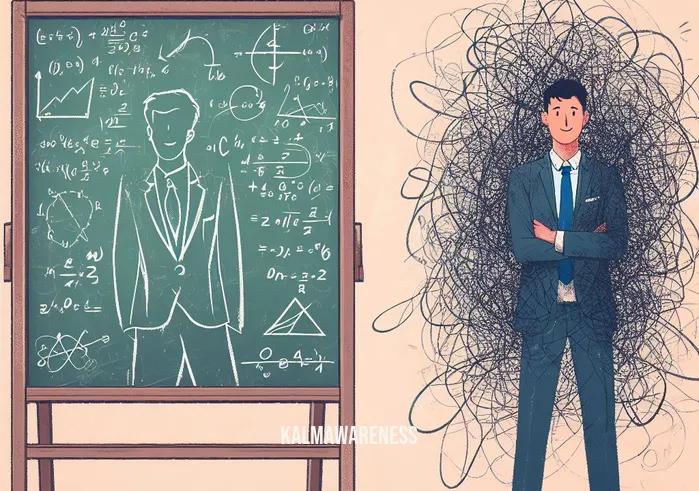
The Interplay of Elements: Water Meditation Meets Other Mindfulness Practices
Water, with its fluid grace and calming rhythm, seamlessly intertwines with various mindfulness practices, offering a dynamic dimension to traditional meditation techniques. Through the ripples of time, meditation on water has formed bonds with diverse meditative practices, enhancing their efficacy and appeal. This chapter sheds light on how this elemental force complements and elevates other methods of seeking inner tranquility.
H2: Water and Breath: A Symphony of Peace
Every drop in the ocean matters, just as every breath we take holds significance. When water meditation converges with mindful breathing techniques, the outcome is nothing short of magical. For those grappling with the challenges of a busy mind, the mindfulness prescription for adult ADHD provides valuable insights. Breathing in sync with the imagined tide can bring profound moments of clarity.
“You cannot swim for new horizons until you have the courage to lose sight of the shore.” – William Faulkner
This profound quote underscores the transformative power of combining breathwork with water imagery. Just as waves come and go, so does our breath, teaching us the impermanence and fleeting nature of life’s stresses.
H3: Water Meditation and Yoga: A Dance of Fluid Movements
Yoga, the ancient practice of uniting body, mind, and soul, gains a refreshing layer when merged with the imagery of water. Poses that imitate the graceful flow of rivers or the stillness of lakes add a therapeutic dimension to yoga. As one stretches and moves, visualizing water can amplify the healing. Can u meditate lying down? With water meditation combined with yoga, not only can you meditate lying down, but you can also imagine the gentle waves caressing your being.
“Water is the driving force of all nature.” – Leonardo da Vinci
Da Vinci’s words resonate deeply when one thinks of yoga’s purpose: to channel nature’s force through our being. By embodying water’s qualities in yoga, one can indeed become a conduit of nature’s energy.
H4: Water Visualization and Mindful Walking: Journeying Within
Walking meditation, a practice rooted in Buddhist teachings, involves moving with intention and mindfulness. Adding water visualization to this creates an environment of enhanced peace. Imagine the ground beneath as the soft bed of a water body, with every step causing gentle ripples. Such imagery is akin to the techniques discussed in object of meditation, where a focal point amplifies the mindfulness experience.
“A river cuts through rock, not because of its power, but because of its persistence.” – Jim Watkins
Watkins’ words are a beautiful reminder of the power of persistence, and when we combine the steadiness of mindful walking with the perseverance of water, our meditation deepens.
H5: Integrating Water Sounds in Mindfulness Music
The gentle lapping of waves, the cascading melody of waterfalls, or even the rhythmic drizzle of rain – water sounds have always been integral to relaxation music. By integrating these sounds, practitioners can dive deeper into their meditative state, as elucidated in binaural beats for migraine. Such sounds, combined with specific frequencies, can induce relaxation and even alleviate pain.
“In one drop of water are found all the secrets of all the oceans.” – Kahlil Gibran
This quote by Gibran encapsulates the infinite depth and wisdom water holds. When these sounds echo in our ears during meditation, we’re not just hearing; we’re experiencing the universe’s profound mysteries.
In conclusion, the essence of meditation on water, with its inherent serenity and depth, enhances numerous mindfulness practices. This interplay of elements has not only withstood the test of time but has also evolved, offering a sanctuary for those seeking inner peace in today’s chaotic world.
Embark on the next chapter with us, as we delve into practical techniques to integrate water meditation into daily life. From quick five-minute sessions to detailed immersive experiences, discover how you can bring the tranquility of water meditation to your everyday routines. Let’s continue to ride the waves of this enlightening expedition.
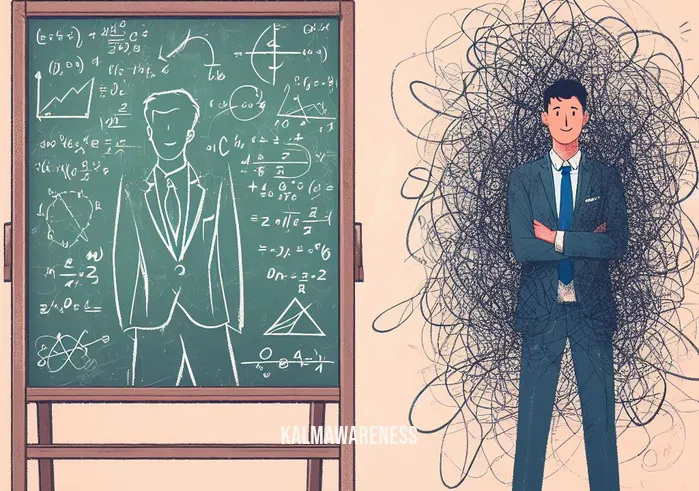
The Practical Waters: Techniques and Tips for Effective Water Meditation
Water, with its vastness and rhythm, has been an inspiration for numerous meditation practices. As we delve deeper into the realm of meditation on water, this chapter will navigate through various techniques, tips, and curated advice to integrate this elemental form into daily life. Harnessing the therapeutic qualities of water can be a game-changer in the journey of mindfulness.
H2: Techniques to Dive Into
Rhythmic Water Breathing: Aligning your breath with the rhythm of waves can be deeply therapeutic. Every inhalation can mimic the rise of a wave, and every exhalation its gentle crash. For those new to this approach, the mindful movement sleep guide provides deeper insights.
Floating Meditation: Emulating the sensation of floating on water, whether physically or mentally, can bring about profound relaxation. This concept closely ties to floating meditation, where one’s body is left feeling weightless, creating a sanctuary of peace.
Rainfall Visualization: Imagine gentle raindrops falling on your body, washing away stress and anxiety. Each drop cleanses the mind, reminiscent of techniques explored in relax and be aware.
River Stream Focus: Visualizing a river’s journey, with its twists and turns, can mirror life’s journey. By focusing on this continuous flow, we can be reminded of life’s impermanence and learn to let go.
H3: Tips to Enhance Your Water Meditation Experience
Consistency is Key: Just like water consistently flows, maintaining a regular meditation routine is crucial. Over time, benefits compound, similar to the continuous nourishing of rivers enriching the lands they flow through.
Seek Authentic Sounds: If possible, meditate near real water bodies. The natural sounds of flowing streams, cascading waterfalls, or gentle ocean waves can greatly intensify the experience. If this isn’t feasible, the techniques used in flight rising meditate can help simulate authentic water sounds.
Set an Intention: Before beginning your meditation session, set an intention. This could be to let go, find clarity, or simply rejuvenate. With each ripple and wave visualized, let this intention guide the session.
Stay Open to Experiences: Water, with its varied forms – from serene lakes to roaring oceans, teaches us the beauty of variety. Similarly, each meditation session can be unique. Sometimes it may be profound, and other times, it may be more surface-level. Just as hand yoga poses offers varied experiences to its practitioners, water meditation too has its nuances.
H4: Essential Tools for Water Meditation
Guided Meditation Apps: These provide narrated sessions focusing on water, making the experience more immersive. This can be a starting point for beginners.
Soundscapes: Collections of natural water sounds, like flowing rivers, crashing waves, or gentle raindrops, available on various platforms. Sounds have the power to elevate the meditative experience, a concept highlighted in u relax moving.
Water-themed Decor: Having water-themed decor in your meditation space, such as paintings, shells, or even small water fountains, can intensify the water connection.
Books & Guides: Literature offering insights and techniques on water meditation. They can serve as invaluable tools, much like the insights given in inner child healing exercises.
Workshops & Classes: Joining dedicated classes or workshops focusing on meditation on water can provide structured guidance and community support.
In essence, the waters of meditation are vast and profound. By integrating the elemental force of water into mindfulness practices, one can truly deepen their connection with their inner self, finding tranquility, clarity, and rejuvenation.
Flow into our next chapter as we explore the spiritual and philosophical underpinnings of water meditation. Understand the symbology of water in various cultures and how it has been revered as a force of enlightenment. Dive deep into the profound essence of water and its transformative power in the realm of mindfulness. Join us on this enlightening voyage.
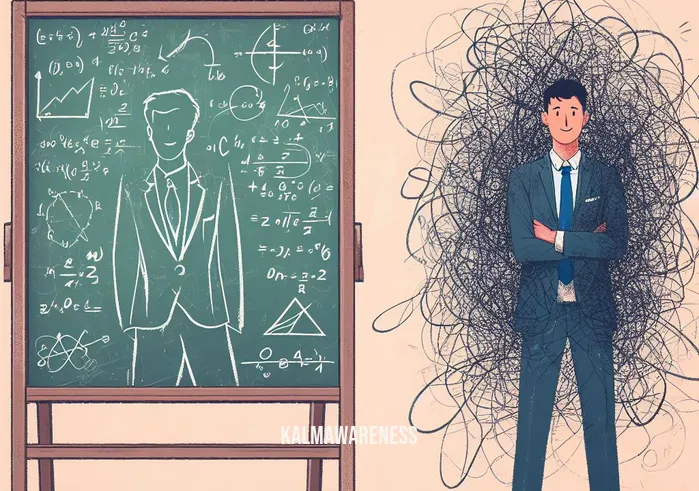
The Spiritual Resonance: Unveiling the Deeper Dimensions of Water Meditation
There’s a pristine, universal essence to water that has made it a revered element in various cultures and traditions. As we conclude our deep dive into meditation on water, let’s gently surf the waves of its spiritual resonance, understanding why this element has not just hydrated our bodies but also our souls.
H2: The Symbolism of Water Across Cultures
From ancient civilizations to modern societies, water has always been symbolic of life, purity, and transformation. The ancient Egyptians regarded the Nile as the source of all life. In Chinese philosophy, water embodies the yin aspect – symbolizing passivity, flexibility, and mystery. In Christian baptism, water symbolizes purification and rebirth.
For many, meditating on water isn’t just about the calming ripples but also about connecting with the universe’s rhythm. The fluidity of water, its capacity to adapt, reshape and flow, is much like our journey in life. This connection to the vastness of existence is well reflected in practices like rouse yoga and object of meditation.
H3: Water Meditation’s Transformative Power
Water, in its natural cycle, undergoes transformation. From evaporation to condensation and precipitation, it’s an unending cycle of change. This process mirrors our human journey – growth, setbacks, learning, and evolving. Embracing the teachings of water, meditators often find themselves undergoing profound shifts, akin to the transformative nature of EMDR meditation.
H4: The Lightness of Being: Water Meditation’s Healing Touch
Every droplet of water carries with it the universe’s essence. The lightness and fluidity of water inspire feelings of freedom, liberation, and effortless existence. There’s a gentle buoyancy to water meditation, a soothing embrace that helps one float above life’s tumultuous waves.
Much like the gentle guidance provided in can you meditate while high and involves attaining a peaceful state of mind in which thoughts are not occupied by worry, meditating on water gifts a lightness of being, helping souls navigate the depths and shallows of existence with grace.
H2: Reflecting Upon The Journey
As rivers meet the ocean, so our exploration of water meditation merges with the vast ocean of mindfulness. The journey has been enlightening – from understanding techniques to grasping water’s spiritual significance.
It’s our hope that as you meander through life, the insights shared here become your guiding streams, helping you find your way back to tranquility, whenever you feel adrift. As you delve deeper into your own practices, may you find solace in the vast knowledge reservoirs like teenagers walking or the intricate techniques highlighted in mind breaths.
As we close this chapter, we are filled with gratitude for joining us on this enlightening voyage. The waters of meditation are boundless, and there’s always more to explore. We encourage you to continue your exploration, dive deeper, and surf the waves of other enlightening topics in our magazines. Remember, every journey begins with a single ripple, and every moment of mindfulness contributes to the vast ocean of collective consciousness. Until we meet again on another journey, stay hydrated, in body, mind, and spirit!
